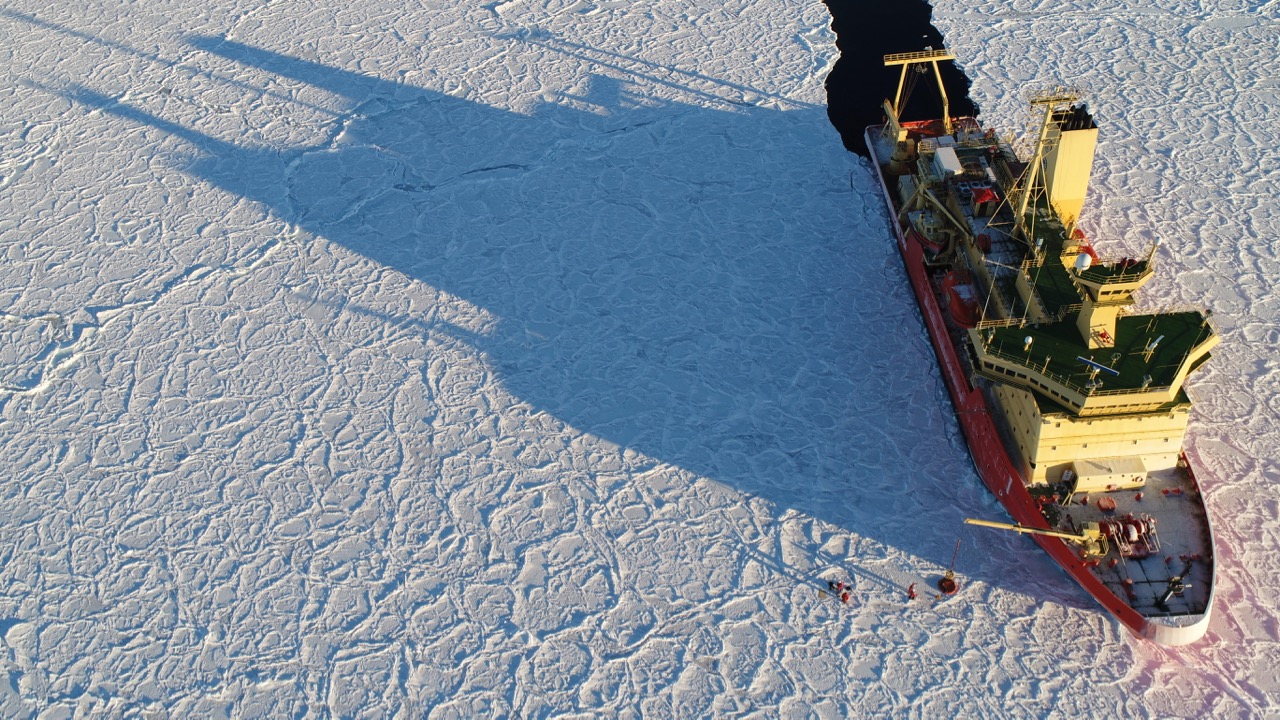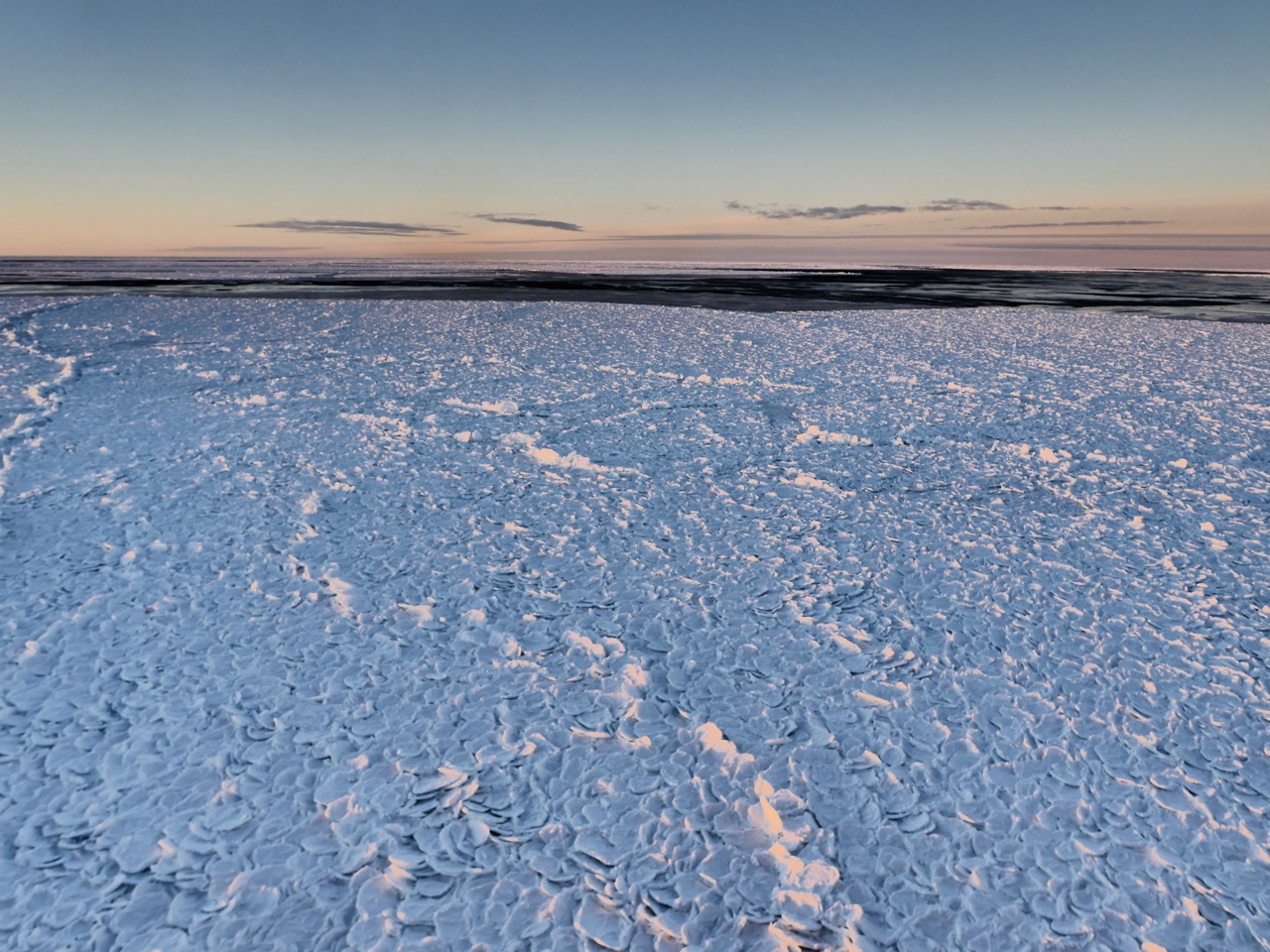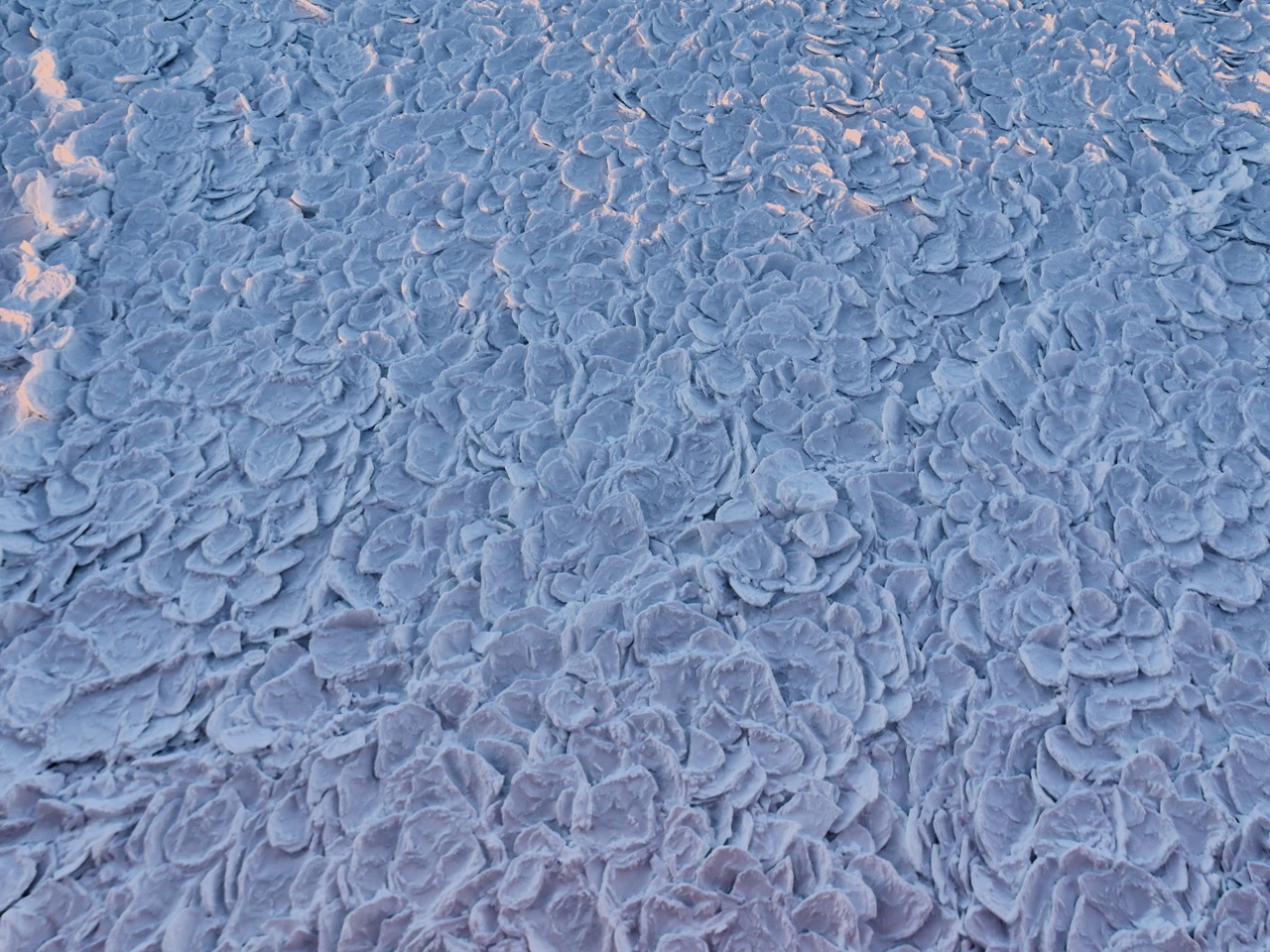
An autumn voyage to the heart of an Antarctic polynya has rewarded expeditioners on a US icebreaker, including IMAS researcher Dr Guy Williams, with a glimpse of a rarely seen type of sea ice.
The sighting of “Dragon-skin” ice (see photos below) was an early highlight of an ongoing voyage to the Ross Sea by the Nathan B Palmer that began in early April, well after most Antarctic expeditioners have departed for warmer climes. (Click to view YouTube video of the voyage)
“Dragon-skin ice is very rare, bizarre, evidence of a darker chaos in the cryospheric realm, not seen in Antarctica since 2007,” Dr Williams said.
Dr Williams is one of 27 scientists from eight countries who are studying the winter behaviour of coastal polynyas - areas of open water against Antarctica that are ‘ice –factories’, with 10 times the average amount of sea ice produced due to the strength of local ‘katabatic’ winds that flow from the interior of Antarctica.
 “Imagine your standard ice cube tray, filled once. After a week, you get one tray of ice cubes. But if you empty and re-fill the tray each night, you get so much more.
“Imagine your standard ice cube tray, filled once. After a week, you get one tray of ice cubes. But if you empty and re-fill the tray each night, you get so much more.
“That is what the katabatic winds are doing in the polynya, removing the ice, exposing the water and making more ice form.”
Dr Williams said enhanced sea ice growth has a vitally important effect on the local and global oceanography.
Seawater largely freezes as freshwater ice. Salty brine is rejected during the formation of ice and makes the underlying water very cold and dense enough to ultimately sink to the abyssal layer of the major ocean basins and kickstart the southern limb of the global overturning circulation
“We are currently at ground zero of a hurricane-strength (65+ knots) katabatic wind event in the Terra Nova Bay polynya, in the Ross Sea, West Antarctica. It’s quite incredible to experience such an epic demonstration of polar ocean-atmospheric interaction.
“After a couple of weeks of work in the advancing sea ice pack to the north, we have found ourselves once again strapping everything down as the winds and waves buffet our progress.
 “We will spend the next two weeks taking advantage of quiet periods when the katabatic winds drop off to observe the increase in salinity of the shelf waters below polynyas as brine-rejected during sea-ice formation rains down to depths below 1000m in the Drygalski Trough.”
“We will spend the next two weeks taking advantage of quiet periods when the katabatic winds drop off to observe the increase in salinity of the shelf waters below polynyas as brine-rejected during sea-ice formation rains down to depths below 1000m in the Drygalski Trough.”
With funding from the Australian Research Council, Dr Williams has brought a squadron of fixed-wing unmanned aerial systems (UAS) with the aim of augmenting on-ice LIDAR (laser scanning) surveys of the surface topography.
He’s taking part in the PIPERS expedition to the Ross Sea polynyas as part of an ongoing collaboration between the University of Tasmania, Woods Hole Oceanographic Institution and Northeastern University on combined Autonomous Underwater Vehicle (AUV) and UAS observations above and below sea ice.
Dr Williams is also assisting in the deployment of wave-ice interaction buoys from the National Institute for Water and Atmospheric Research, a core partner of the ACE CRC.